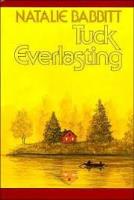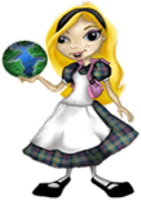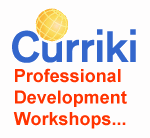We recently ran a survey of our members asking them “How do you inspire learning?”. We appreciate all of the interesting responses we received.
One of our members, Vincent Churchill, provided a very interesting multi-page response, which I would like to summarize here. His response is actually rather profound. Instead of thinking about you as a teacher inspiring learning, think about it one level higher.
That is, quoting Mr. Churchill: “Lead students to inspire themselves”. Think about it – the best inspiration and motivation comes from within as a continuous process, once the student can get to that place. So help them to get to that place where they don’t just draw occasional inspiration from without, but fuel it more regularly from within. And help them get to the place where they will also seek additional external sources of inspiration for themselves.
Here’s some of what Mr. Churchill wrote in his response:
“And the answer is…
My answer is twofold and in starting the first part of my answer, I would have to qualify that it is about leading students to inspiring themselves, with their own motivations and reasons, not aimed at a’result’, reward or specific goal in mind. In short, that they be inspired at a very personal level and for various different reasons… their own reasons! My thoughts on the matter are geared towards a quite few things;
1. … to want to know more about the subject/issue at hand
2. … to be willing to share his/her thoughts about the subject/issue
3. … to find authentic and original examples for illustrating a particular example
4. … to examine, investigate, question and put forward opinions (sometimes of a personal nature)
5. … to be willing to ‘risk being wrong’ by giving an answer
6. … to debate and discuss (even argue) with their peers
7. … to take the classroom experience/material out into the ‘real world’. “
So help students find their own reasons for motivation and inspiration. It’s not enough to be inspired to just get through an exam, but to love the learning process, and the personal growth associated with that.
The second part of Mr. Churchill’s answer is about individualized learning. He notes that there is no “silver bullet” solution.
“In concluding, my answer takes cognisance of the fact that students can NEVER be seen as ‘just a class’ and that any motivation, inspiration, action or expectation should be based on careful (yes, sometimes erroneous) observations, assumptions and expected outcomes of INDIVIDUALS in the class. The motivation for learning then follows, from the student’s side, because they have a genuine interest and also a reason for wanting to learn.”
So to get to this place one has to look at who the students are as individuals, what are their likes and dislikes and passion? What skills and experiences do they have, what are their strengths and weaknesses? What is their personality, is it shy, is it aggressive, etc.?
As we said in our last blog, about AltSchool, an experimental school in San Francisco – “Not all children are alike. Not all children learn the same way. AltSchool’s philosophy is very similar to Curriki’s in that we’re both driving transformation from the ‘assembly line factory model’ of education into a new model where the emphasis is on personalization, understanding and critical thinking skills.”
There are over 62,000 resources at Curriki to help support individualized learning and to help students inspire themselves! Please take advantage of these free, open source resources to inspire self-inspiration.




 novel Tuck Everlasting. With an emphasis on questioning, particularly question-answer relationships, the novel study materials guide students to develop critical thinking skills. All materials like question cards, game instructions, graphic organizers, rubrics, templates for character development, vocabulary development, etc., are included in this thorough, comprehensive, highly usable resource.
novel Tuck Everlasting. With an emphasis on questioning, particularly question-answer relationships, the novel study materials guide students to develop critical thinking skills. All materials like question cards, game instructions, graphic organizers, rubrics, templates for character development, vocabulary development, etc., are included in this thorough, comprehensive, highly usable resource. A Collection of various lesson plans including: Selling Geometry, Designing a Winner, What is your angle, Pythagoras?, TED Talk: House of the Future, The Art of Triangles, How random is my life?
A Collection of various lesson plans including: Selling Geometry, Designing a Winner, What is your angle, Pythagoras?, TED Talk: House of the Future, The Art of Triangles, How random is my life? This lesson is part of a larger unit on the Great Depression. In this unit, students will be focusing on determining importance; summarizing; making predictions; recognizing plot structure; and identifying flashbacks, foreshadowing and setting. Wherever possible, mini-lesson texts relate to American life in the 1930s, and all students will be reading literature circle novels set during this time period in American history.
This lesson is part of a larger unit on the Great Depression. In this unit, students will be focusing on determining importance; summarizing; making predictions; recognizing plot structure; and identifying flashbacks, foreshadowing and setting. Wherever possible, mini-lesson texts relate to American life in the 1930s, and all students will be reading literature circle novels set during this time period in American history. quizzes, word games, word puzzles, proverbs, slang expressions, anagrams, a random-sentence generator and other computer assisted language learning activities.
quizzes, word games, word puzzles, proverbs, slang expressions, anagrams, a random-sentence generator and other computer assisted language learning activities. programming experience to learn basic Java programming concepts. Participants use Carnegie Mellon’s Alice* platform to do something fun – create animated stories, movies and games.
programming experience to learn basic Java programming concepts. Participants use Carnegie Mellon’s Alice* platform to do something fun – create animated stories, movies and games. This highly-rated collection of resources includes videos and lessons for teaching fractions.
This highly-rated collection of resources includes videos and lessons for teaching fractions. This collection contains a wide variety of activities, labs, slide shows and worksheets on the topics of Cells, Cellular Transport, DNA, Photosynthesis & Respiration, Mitosis & Meiosis, Genetics, Evolution, and Classification. Much of the material is suitable for both middle school and high school students, although some of the pieces (such as the Photosynthesis PowerPoint presentation) have complex material better suited for more advanced biology classes.
This collection contains a wide variety of activities, labs, slide shows and worksheets on the topics of Cells, Cellular Transport, DNA, Photosynthesis & Respiration, Mitosis & Meiosis, Genetics, Evolution, and Classification. Much of the material is suitable for both middle school and high school students, although some of the pieces (such as the Photosynthesis PowerPoint presentation) have complex material better suited for more advanced biology classes. covering all topics in a complete high school or college course in Physics. Many of the videos demonstrate solutions to sample problems. This is excellent primary material for long distance learning, or rich supplementary material for any physics course.
covering all topics in a complete high school or college course in Physics. Many of the videos demonstrate solutions to sample problems. This is excellent primary material for long distance learning, or rich supplementary material for any physics course. Always in our top 10 resources, this grammar collection is an extremely rich resource offering a complete unit on teaching grammar in a fun way. The content is correct, thorough and appropriate. Inclusion of a version of Mad Libs and a collaborative group project/presentation offers as much creativity for teaching grammar as possible. A humorous poem in worksheet form makes the lesson engaging and interesting. A scoring guide for the presentation makes the unit meaningful and understandable to students. The unit uses many various strategies to enhance the content.
Always in our top 10 resources, this grammar collection is an extremely rich resource offering a complete unit on teaching grammar in a fun way. The content is correct, thorough and appropriate. Inclusion of a version of Mad Libs and a collaborative group project/presentation offers as much creativity for teaching grammar as possible. A humorous poem in worksheet form makes the lesson engaging and interesting. A scoring guide for the presentation makes the unit meaningful and understandable to students. The unit uses many various strategies to enhance the content.






 Producing is harder than consuming – coding is more difficult than using an app. Yet our modern economy is increasingly reliant on coding and computer science technology more generally.
Producing is harder than consuming – coding is more difficult than using an app. Yet our modern economy is increasingly reliant on coding and computer science technology more generally.






